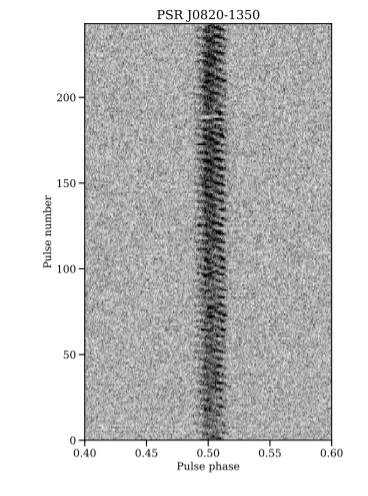A major part of UTMOST’s time on sky is spent observing pulsars — the extremely dense remnants of supernova explosions. Discovered just over 50 years ago, pulsars allow us to make tests of fundamental physical theory (such as relativity), examine the properties of dense matter, and map the properties of the ionised gas in the Milky Way and other galaxies, just to name a few.
UTMOST has now published our first results for timing the pulses of over 200 pulsars in the Southern Sky. Led by PhD student Fabian Jankowski — who now has a postdoctoral position at Manchester University — the project timed over 400 pulsars. For 205 of these (8 of which are in binaries, and 4 of which are millisecond pulsars) we publish updated timing models, together with their flux densities, flux density variability, and pulse widths at 843 MHz, derived from observations spanning between 1.4 and 3 years.

The paper, which has been accepted for publication in the Monthly Notices of the Royal Astronomical Society, is available on the astrophysics archive.